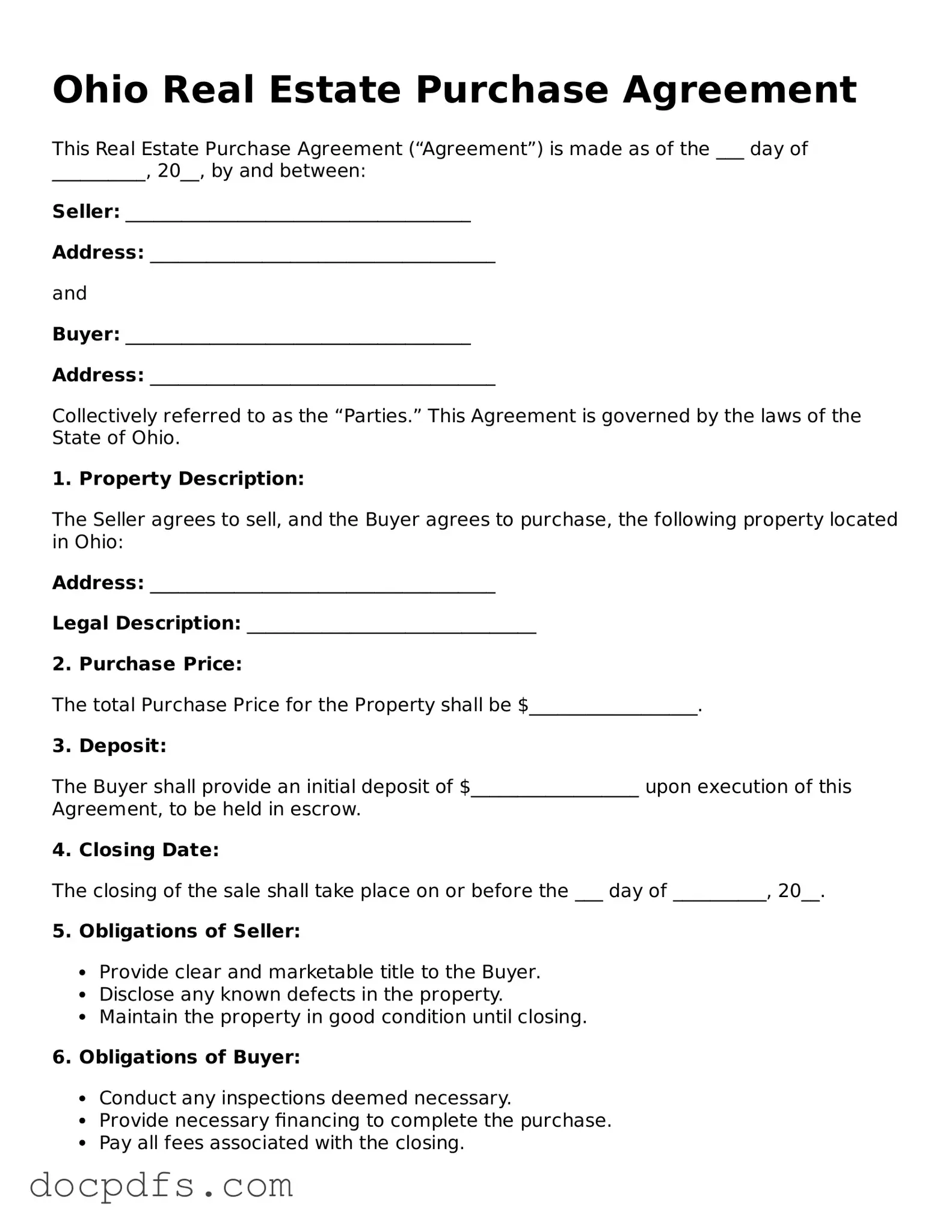Free Ohio Real Estate Purchase Agreement Form
The Ohio Real Estate Purchase Agreement is a legally binding document that outlines the terms and conditions under which a buyer agrees to purchase property from a seller. This essential form serves to protect the interests of both parties by clearly detailing the obligations and rights involved in the transaction. Understanding its components can help ensure a smooth and successful real estate deal in Ohio.
Open Real Estate Purchase Agreement Editor Now
